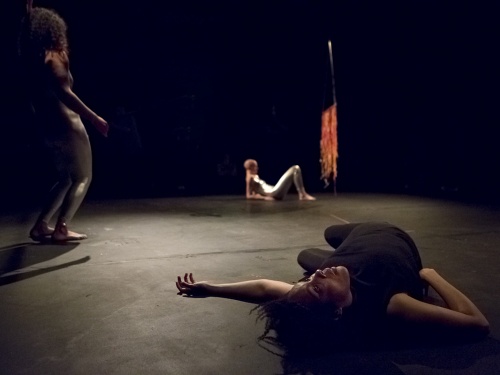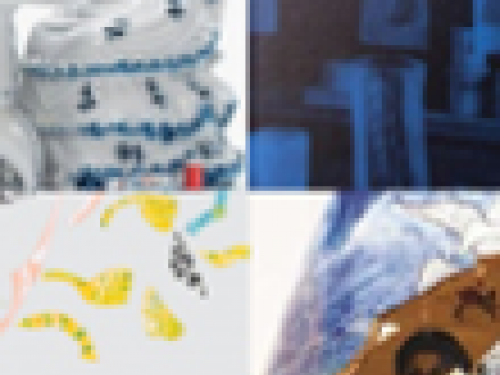Tauba Auerbach: The New Ambidextrous Universe Reading List
The ever-helpful ICA Bookshop has put together a brand new reading list to accompany the latest exhibition in the Lower Gallery, Tauba Auerbach: The New Ambidextrous Universe. All of the titles are available online or in our Bookshop on the Mall.
The New Ambidextrous Universe
Martin Gardner
£17.99
A driving force behind Tauba Auerbach's ICA exhibition is this mind-bending book of the same name. We heartily recommend Martin Gardner's stunning read which opens up with an explanation of why your mirror image reverses horizontally but not vertically, and goes on breathtakingly into the deep mysteries of modern physics by way of the fourth dimension, symmetrical extraterrestrials, antiparticles, the direction of time and very young children drawing circles.
Why Beauty is Truth: The History of Symmetry
Ian Stewart
£11.99
This book shows how particular numbers have unique and unpredictable properties related to symmetry. Mirrored mysteries abound in this history of mathematical symmetry, showing us why mathematicians think numbers are so infinitely beautiful and where mathematics might take us. The significant breakthroughs are covered, starting with the scribes of Babylon (after a pistol duel at dawn in the preface) and ending with string theory. If you’re interested in how the universe works, you probably need to know everything in this book.
Flatland
Edwin A. Abbott
£6.99
Could other beings exist in another fourth dimension (or fifth, sixth, et cetera ad infinitum) which we simply can’t see? Are they desperately in love with us and incredibly gorgeous? Highly likely. Here’s the wonderful Carl Sagan effortlessly explaining the concept behind this classic book, one of the earliest instances of modern speculative fiction and perhaps the only instance of mathematical satire. The main character is a lowly square whose polygonal betters exhibit more sides. This square discovers pathways to other worlds where thinking is as rigidly defined as in his own. Class structures, the position of women (who are but mere lines) and the stolidness of religious and political leaders are sent up with chilly aplomb.
The Complete Cosmicomics
Italo Calvino
£9.99
Qfwfq, Calvino’s ubiquitous narrator, takes hold of the few trillion atoms which make up your hand and guides you around this book/universe. One story is set before the Big Bang, in another he plays marbles with newly formed hydrogen atoms and in another he is a dinosaur. Salman Rushdie exploded with bliss over this collection, calling the book “the most joyful reading experience of [one’s] life."
In Search of the Multiverse
John Gribbin
£9.99
This book brings to mind the Tom Stoppard line: “Infinity is... a terrible thought... where's it all going to end?" Diving into the terrifyingly deep waters of the multiverse, we are educated here on the new theories and bafflements concerning matter, gravity, space and parallel worlds. Thoughts include the possibility that this universe is an artefact created by aliens in another universe and the idea that we could one day create new universes.
Art and Visual Perception
Rudolph Arnheim
£21.95
Psychology and art are obviously linked, but how? The experience of light, how colours come about and interact, scales of complexity, the scribbles of children as a miracle of nature, swans necks leading into human buttocks, perceptual shape, asking Van Gogh to tell us what he meant by yellow, objects tilting away, kinetic painting, stroboscopic phenomena, sorrowful trees and giving weight through colour are all illuminated in this rich book which reveals how the mind makes sense of the visual world.
Euclid’s Window
Leonard Mlodinow
£9.99
The word “genius” is used to describe any hollow-headed simpleton who manages to yawn or fart these days, but once upon a time it was reserved for people like Pythagoras, who invented a system of rules to describe the whole universe, and Euclid, the father of geometry. To be frank, the idea of reading a book about geometry strikes me with a beige mix of dread and indifference but this book seems to have astonishing things on every page. You dive through 3000 years of geometrical joy with peppery facts such as these: every McDonald’s burger weighs a slightly different amount, a stationary ping pong ball is moving slower than one centimeter per second, a solid is (or might be) permeating the entire universe and much more. It also includes ignoramuses at a Beethoven concert.
An Essay on Typography
Eric Gill
£7.99
“A good piece of lettering is as beautiful a thing to see as any sculpture or painted picture.” So sayeth Eric Gill, the famous author (his Gill Sans font is probably sat in your computer now) of this damn fine book on the curves, kerning and kinks that go into everything you have ever read or will read. This essay referees the wrestling match between craftsmanship and the industrial revolution, scorns overly-sloping italics and generally enlightens on various penned processes with the laser sharp precision of a true expert. This is specialist knowledge everyone should know.
The Fold
Gilles Deleuze
Are you interested in a new Baroque movement? Is the Baroque infinite? In what way does it move along two infinities? What is Baroque? What is so interesting about Leibniz? Are you interested in a Baroque mathematical physics whose goal is curvilinearity? Are you interested in totally naked monads? Are you still reading? What is hidden in “the folds?” While this book is not a light read, it is worth swimming in these strong fool-folding currents. Inside you will find the two things which the Great Pyramid of Giza signifies, God as a process, enormous flaps on overflowing shirts, Dubuffet’s plastic habitat and the dilating detours of different layers of an object.
Rogerson’s Book of Numbers
Barnaby Rogerson
£9.99
208 pages about numbers: what they eat, what they wear, where they go to unwind and so on (though none of that is in this book). Questions such as “How many angels could dance on a pin?” are genuinely answered and things such as “70 Holy Idiots of Sufism,” “Satan’s 13 Peers of Hell,” “5 Components of the Soul in Ancient Egypt” and “4 Magical Possessions of Odin” are all unveiled in this charmer.
This article is posted in: Exhibitions, Store
Tagged with: Tauba Auerbach, reading list, bookshop





